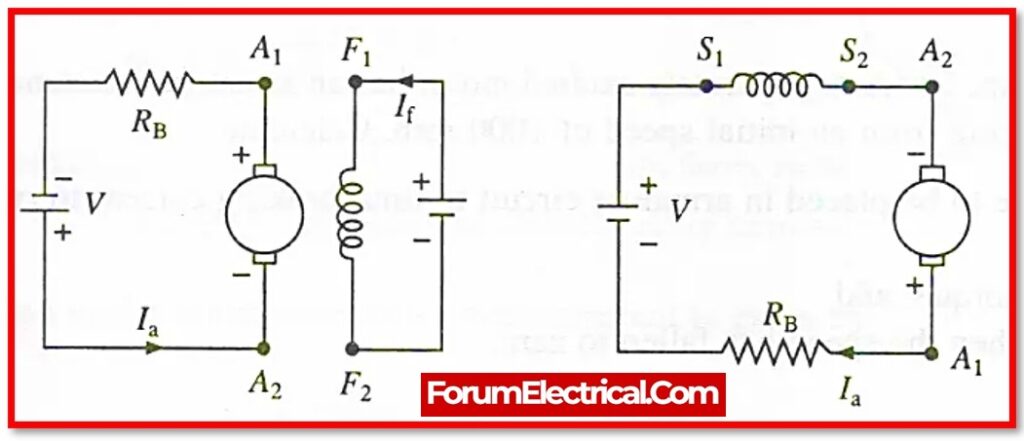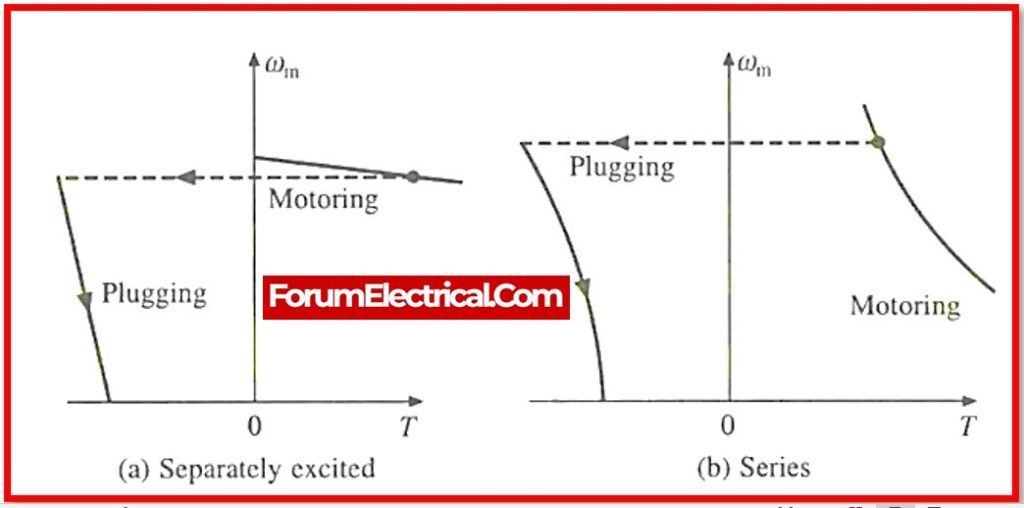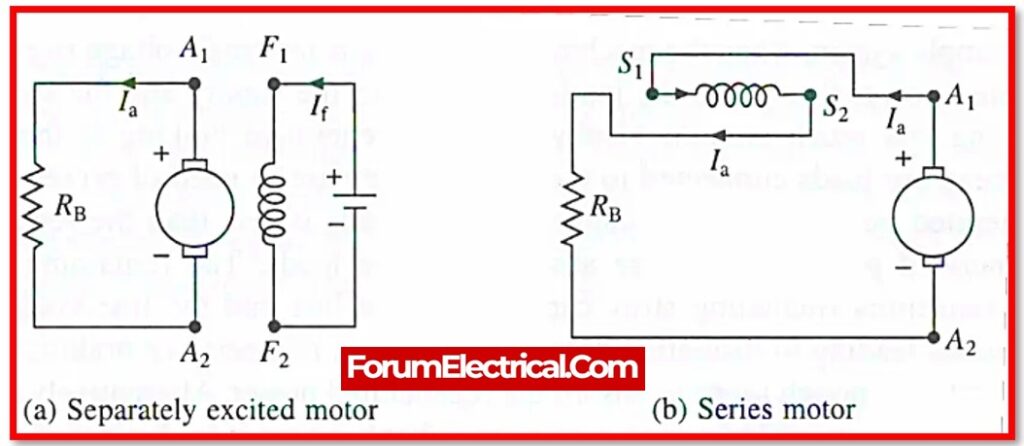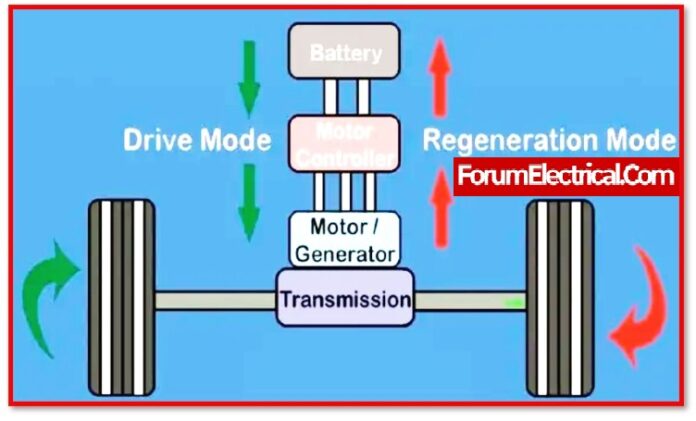The brake serves as the most effective device in a vehicle for controlling it. It slows down each and every rotating parts of electrical & mechanical equipment.
It is an essential component of system safety. It makes use of friction between the two surfaces. This is how kinetic energy is converted into heat.

Almost all vehicle wheels are equipped with a braking system.
- Peak force,
- Fade,
- Continuous part dissipation,
- Power,
- Smoothness,
- Noise,
- Weight,
- Durability,
- Drag, and
- Pedal feel
are some of its characteristics.
The foundation components at the wheels serve as the foundation for the braking system. These are classified into three types: wedge brakes, disc brakes, and cam brakes. This discusses all of the different types of barking systems.
Mechanical Braking System
Mechanical braking is most common in scooters, automobiles, and motorcycles, where only the small amount of power is required.
It is required in the production of power transmission applications, material handling, and other similar applications.
It applies forces to an axle (or) wheel in order to bring it to a stop.
When compared to electrical braking, mechanical braking helps to effectively reduce the speed of the system.
The pedal regulates the operation of a mechanical brake. When you apply pressure to the brake pedal, the brake shoes are pushed outward & rotate against the drum, which is attached to the wheels.
As a result, the machine (or) vehicle slows and eventually comes to a stop. When the pedal is released, the pullback action of the spring shoes returns it back to its normal position.
Electrical Braking System
Based on flux and torque, electrical braking is employed to reduce machine speed.
This type of braking is mostly used for the functional braking to control the speed of the machine. It’s easy to use and comfortable.
It cannotbe used for emergency (or) parking braking.
Electrical braking is powered by the electromagnetic force acting on the brake shoes.
The battery produces an electric current that helps to power the electromagnet mounted on the back-plate. The cam engages and brake shoes expand as a result.
As a result,braking the wheel brings the vehicle (or) machine to a stop.
There are 3 types of electric braking,
1). Regenerative Braking,
2). Plugging (or)Reverse current Braking and
3). Rheostatic (or)Dynamic Braking.
1). Regenerative Braking
The power (or) energy of the driven machinery in kinetic form is returned to the power supply mains in regenerative braking.
This type of braking is feasible when the driven load (or) machinery forces the motor to run faster than its no-load speed with constant excitation.
The back emf (Eb) of the motor is greater (>) than the supply voltage (V) under this condition, which causes the motor armature current to reverse direction.

The machine starts to function as a generator, and the energy produced is fed back into the source.
If the motor is integrated as a separately excited generator, regenerative braking can also be implemented at very low speeds.
As the speed of the motor is reduced, the excitation increases.
Eb= nPøZ/A and V=Eb-IaRa
When the excitation is increased, the motor does not reach saturation.
With the shunt & separately excited motors, regenerative braking is possible.
Braking is only possible in compound motors with weak series compounding.
Advantages of Regenerative Braking
- The most significant advantage is the reduced amount of power consumed.
- Overall system efficiency has improved.
Disadvantages of Regenerative Braking
- The main disadvantage is that when the motor exceeds (raises) the synchronous speed, mechanical and electrical damage can occur.
- As a result, only when a variable frequency source is used can regenerative braking occur at a sub-synchronous speed.
Applications of Regenerative Braking
- When frequent braking & slowing of vehicles is required, regenerative braking is useful.
- It is ideal for maintaining the constant speed on a descending load with a lot of potential energy.
- Regenerative braking is a technique used to control the speed of motors that drive loads, such as those found in
- Electric locomotives,
- Elevators,
- Cranes, and
- Hoists.
- Regenerative braking cannot be used to stop the motor. It is used to regulate the speed of the motor above the no-load speed.
2). Plugging (or) Reverse Current Braking
When using Plugging or Reverse Current Braking, the armature terminals or supply polarity of the separately excited (or) shunt motor are reversed while it is running.
As a result, when the supply voltage V is connected, the induced voltage Eb, also known as back EMF, will function in the same direction.

As a result, the effective voltage all across armature during plugging will be (V + Eb), which is nearly twice the (input) supply voltage.
The armature current is reversed, resulting in a high braking torque. To keep the armature current protected, an external (outer) current limiting resistor is connected in series with it.
For braking, the armature or field terminals of a series motor are reversed.
However, the armature & field terminals are not reversed simultaneously. Reversing both terminals will result in normal working operation.
The braking torque is not in zero at zero speed. When the motor is used to stop a load, it should be disconnected from the supply at (or) near zero speed.

If motor is not disconnected from the power supply, it will accelerate in the opposite direction.
Centrifugal switches are used to turn off the power.
Advantages of Plugging Braking
- When compared to rheostatic braking, plugging braking results in a greater amount of braking torque.
Disadvantages of Plugging Braking
- The major disadvantage of this method is that the resistance consumes both regenerated and supply power. As a result, plugging is the most inefficient method of braking.
Applications of Plugging Braking
The following applications of the plugging that are listed below are common uses for it:
- In controlling elevators
- Rolling Mills
- Machines used for printing
- Machine tools
3). Dynamic Braking
When the DC motor is disconnected from the power supply, a braking resistor Rb is connected all across armature. The motor is now acting as a generator, generating braking torque.
In Dynamic Braking system, the motor is connected in two ways for braking.

First, the separately excited (or) shunt motor can be connected as a separately excited generator with a constant flux.
The second method is to connect it to the self-excited shunt generator, with the field winding running parallel to the armature.
Since an external braking resistance Rb (external resistance) is connected across the armature terminals for electric braking, this method is also known as Rheostatic Braking.
When the motor is working as a generator, the kinetic energy stored in rotating parts of the machine & the connected load is converted into electric energy during electric braking.
Heat is dissipated by the braking resistance Rb and the armature circuit resistance Ra.

The field connections are reversed, causing the current flowing through the field winding to flow in the same direction as before, i.e., from S1 to S2, and the residual flux to be produced by the back EMF.
Now the machine will function as the self-excited series generator.
During self-excitation, the braking operation is slow. As a result, when quick braking is required, the machine is set to self-excitation mode.
A suitable resistance is connected in series with the field to limit the current to a safe level.
Advantages of Dynamic Braking
- When compared to the method – plugging, this method eliminates the need for the supply to provide the energy that is required to brake the motor, which is a significant advantage.
Disadvantages of Dynamic Braking
- During dynamic braking, the energy that has been stored will be lost due to the resistance of the braking, along with the resistance of any other components that are a part of the circuit.
- This will reduce the brake components needed based on the wear that friction causes, and regeneration will decrease the amount of net energy used.
Applications of Dynamic Braking
- The dynamic braking technique is widely employed in the industrial sector to stop a DC motor.
- These systems are found in
- Fans,
- Centrifuges,
- Pumps,
- Rapid or continuous braking, and
- Certain conveyor belts.
- These are used when a quick slowing and reversing is required.
- These are found on
- Railcars,
- Trolleybuses,
- Electric trams,
- Light rail vehicles,
- Hybrid electric and
- Electric automobiles.
Advantages of Electrical Braking
1. It is quick and cost-effective.
2. There is no need for any mechanical equipment.
3. There is very little maintenance required.
4. The operation is dust-free and clean.
5. The energy is converted to electricity and returned to the supply network.
6. There are no steps in the braking.
7. It is simpler, more cost-effective, and more efficient.
8. Closed loop control allows for automatic control.
Disadvantages of Electrical Braking
1. No holding torque can be generated. It is unable to keep the motor in any desired position.
2. The motor selection is limited because it must have adequate braking characteristics.
3. Safety precautions must be properly monitored and observed.
4. There is an increase in power consumption.









